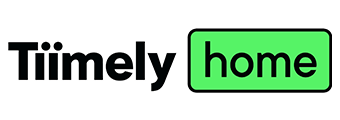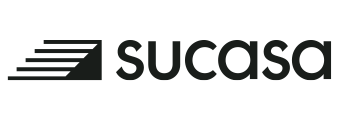
Contrary to what marketing campaigns or sales pitches say, there really is no one best bank for all home loans. The lender that funded your parent or friend's house may not be right for you, no matter how much they swear by it.
Australia's mortgage market is a thriving industry. From Big Four banks to smaller players and non-bank lenders, there are various home loan products available. To navigate this vast market, some select a provider based on familiarity, i.e. their childhood bank or the big brand names. For others, whichever offers the lowest advertised rate is the clear winner.
Ultimately, the best bank for your home loan depends on your personal situation. Here are some factors that may help you decide.
Home loans offered by non-bank lenders
Non-bank lenders are known for their range of innovative home loans with a focus on competitive pricing. These lenders offer fixed and variable-rate home loans, and options that include basic and feature-packed mortgage products. Many non-bank lenders also provide loan solutions for borrowers with non-traditional income sources or low credit scores.
| Lender | Home Loan | Interest Rate | Comparison Rate* | Monthly Repayment | Repayment type | Rate Type | Offset | Redraw | Ongoing Fees | Upfront Fees | Max LVR | Lump Sum Repayment | Additional Repayments | Split Loan Option | Tags | Row Tags | Features | Link | Compare | Promoted Product | Disclosure |
|---|---|---|---|---|---|---|---|---|---|---|---|---|---|---|---|---|---|---|---|---|---|
5.79% p.a. | 5.83% p.a. | $2,931 | Principal & Interest | Variable | $0 | $530 | 90% |
| Promoted | Disclosure | |||||||||||
5.74% p.a. | 5.65% p.a. | $2,915 | Principal & Interest | Variable | $0 | $0 | 80% |
| Promoted | Disclosure | |||||||||||
5.69% p.a. | 5.95% p.a. | $2,899 | Principal & Interest | Fixed | $0 | $530 | 90% |
| Disclosure | ||||||||||||
5.74% p.a. | 5.83% p.a. | $2,915 | Principal & Interest | Fixed | $0 | $0 | 80% | ||||||||||||||
6.04% p.a. | 6.09% p.a. | $3,011 | Principal & Interest | Variable | $null | $null | 70% | ||||||||||||||
5.99% p.a. | 5.99% p.a. | $2,995 | Principal & Interest | Variable | $0 | $0 | 50% | ||||||||||||||
6.05% p.a. | 6.22% p.a. | $3,014 | Principal & Interest | Variable | $null | $null | 98% |
Home loans offered by the Big Four banks
The four largest banks in Australia - CBA, Westpac, NAB, and ANZ - offer a diverse range of home loan products tailored to meet various borrowing needs. These include variable and fixed-rate loans, and specialised mortgages for first home buyers, refinancers, and investors. They also provide features such as redraw facilities, offset accounts, and packages that bundle home loans with other banking products.
| Lender | Home Loan | Interest Rate | Comparison Rate* | Monthly Repayment | Repayment type | Rate Type | Offset | Redraw | Ongoing Fees | Upfront Fees | Max LVR | Lump Sum Repayment | Additional Repayments | Split Loan Option | Tags | Row Tags | Features | Link | Compare | Promoted Product | Disclosure |
|---|---|---|---|---|---|---|---|---|---|---|---|---|---|---|---|---|---|---|---|---|---|
5.79% p.a. | 5.83% p.a. | $2,931 | Principal & Interest | Variable | $0 | $530 | 90% |
| Promoted | Disclosure | |||||||||||
5.74% p.a. | 5.65% p.a. | $2,915 | Principal & Interest | Variable | $0 | $0 | 80% |
| Promoted | Disclosure | |||||||||||
5.69% p.a. | 5.95% p.a. | $2,899 | Principal & Interest | Fixed | $0 | $530 | 90% |
| Disclosure | ||||||||||||
5.74% p.a. | 5.83% p.a. | $2,915 | Principal & Interest | Fixed | $0 | $0 | 80% | ||||||||||||||
6.04% p.a. | 6.09% p.a. | $3,011 | Principal & Interest | Variable | $null | $null | 70% | ||||||||||||||
5.99% p.a. | 5.99% p.a. | $2,995 | Principal & Interest | Variable | $0 | $0 | 50% | ||||||||||||||
6.05% p.a. | 6.22% p.a. | $3,014 | Principal & Interest | Variable | $null | $null | 98% |
Home loans offered by smaller banks
Smaller banks in Australia also boast a variety of home loans at fixed and variable rates. Many of these institutions also provide features such as offset accounts and redraw facilities that help borrowers save on interest and manage their finances more flexibly. The term 'smaller' in this context refers to all banks that are smaller relative to the Big Four.
| Lender | Home Loan | Interest Rate | Comparison Rate* | Monthly Repayment | Repayment type | Rate Type | Offset | Redraw | Ongoing Fees | Upfront Fees | Max LVR | Lump Sum Repayment | Additional Repayments | Split Loan Option | Tags | Row Tags | Features | Link | Compare | Promoted Product | Disclosure |
|---|---|---|---|---|---|---|---|---|---|---|---|---|---|---|---|---|---|---|---|---|---|
5.79% p.a. | 5.83% p.a. | $2,931 | Principal & Interest | Variable | $0 | $530 | 90% |
| Promoted | Disclosure | |||||||||||
5.74% p.a. | 5.65% p.a. | $2,915 | Principal & Interest | Variable | $0 | $0 | 80% |
| Promoted | Disclosure | |||||||||||
5.69% p.a. | 5.95% p.a. | $2,899 | Principal & Interest | Fixed | $0 | $530 | 90% |
| Disclosure | ||||||||||||
5.74% p.a. | 5.83% p.a. | $2,915 | Principal & Interest | Fixed | $0 | $0 | 80% | ||||||||||||||
6.04% p.a. | 6.09% p.a. | $3,011 | Principal & Interest | Variable | $null | $null | 70% | ||||||||||||||
5.99% p.a. | 5.99% p.a. | $2,995 | Principal & Interest | Variable | $0 | $0 | 50% | ||||||||||||||
6.05% p.a. | 6.22% p.a. | $3,014 | Principal & Interest | Variable | $null | $null | 98% |
Comparing the Big Four, smaller banks, and non-bank lenders
|
Factor |
Big Four |
Smaller banks |
Non-bank lenders |
|
Interest rates |
Generally offer higher interest rates than smaller competitors, but can often discount the rates considerably |
Some banks often provide more competitive rates than the Big Four |
Typically offer the most competitive interest rates to those with big deposits or good credit scores |
|
Loan features |
Typically offer extensive product options with various features and bundled financial services |
May also offer extensive product options with various features and bundled financial services |
Primarily offers loans with simple structures and a strong focus on digital services |
|
Fees and charges |
Typically charge upfront, ongoing, and exit fees |
Generally charge upfront, ongoing, and exit fees, though some banks may offer lower fees or waive them entirely |
May also charge fees but usually lower compared to traditional banks; may also waive fees |
|
Technology and innovation |
Offer comprehensive online banking solutions and mobile apps |
Offer comprehensive online banking solutions and mobile apps |
Often lead the market in introducing innovative digital features |
|
Customer service and support |
Provide extensive branch networks combined with comprehensive online and mobile banking platforms |
Typically have fewer physical branches compared to the Big Four; offer support through online and mobile banking platforms, and may have a bigger presence in regional areas |
Known for offering highly personalised customer service, 24/7 online support, and efficient digital communication channels |
|
Security |
Lead with significant investments in anti-scam technology and customer protection initiatives like fraud detection systems, biometric checks, and payment limits |
Also implement robust measures to protect customers from scams, though they often lack the extensive resources of the bigger banks |
Also implement robust measures to protect customers from scams, though they often lack the extensive resources of the bigger banks |
|
Stability and safety |
Regulated by APRA and ASIC; deposits are guaranteed under the Financial Claims Scheme |
Regulated by APRA and ASIC; deposits are guaranteed under the Financial Claims Scheme |
Regulated by ASIC and must comply with the National Consumer Credit Protection Act |
|
Reputation |
Strong reputation and high consumer trust due to market presence, extensive regulatory oversight, and significant capital reserves |
Positive reputation for personalised service within local communities |
Increasingly popular for competitive interest rates and flexibility |
Factors to consider when choosing a bank for your home loan
Interest rates
The interest rate directly affects the overall cost of your loan; a lower rate means lower monthly repayments, making the loan more affordable. Even a slight difference can save you thousands of dollars over a 30-year term. So it's only logical to choose the bank that offers the lowest rate.
However, when you're loan shopping, remember to look beyond the advertised rate and check the comparison rate. The comparison rate takes into account all fees and costs associated with the loan, such as application fees, ongoing charges, redraw fees, and settlement costs.
Typically, lenders with larger overheads like CommBank, NAB, Westpac, and ANZ offer interest rates that are slightly higher to cover those expenses. On the other hand, smaller competitors and online-based lenders may offer lower rates and fees since they have lower overhead costs and thus more savings that can be passed on to customers.
Loan features
Features like offset accounts, redraw facilities, and the ability to split or pay off the loan early sans fees can be key deciding factors in choosing a bank for your home loan.
The majority of banks typically offer home loans with some or a combination of these features. The bigger players may be able to offer a greater range of products and packages that bundle home loans with other banking products like credit cards for added benefits.
Do note though that the flexibility to make extra repayments, reduce the interest you need to pay, and the convenience of having one provider for all your financial needs usually comes with ongoing fees and higher interest rates than standard home loans with basic features.
Fees and charges
Home loan lenders charge various fees to cover the costs they incur in processing the loan and maintaining the features they offer. These extra charges are also meant to either encourage or discourage certain behaviours (i.e. lenders will typically charge you if you're late on your repayments or you pay off your loan early).
It's not uncommon for big banks to charge upfront fees that cover application, settlement, and valuation, as well as ongoing and exit fees. Smaller banks may also charge those, but some may offer lower fees or waive them to attract customers. They may also offer more favourable terms regarding discharge fees compared to the four majors.
Technology and innovation
If you value efficiency, convenience, and flexibility, a bank with a strong focus on fintech and innovation is the obvious choice. Advanced digital platforms can streamline loan application and approval. Moreover, features like real-time loan status updates, online repayment scheduling, and easy loan modifications ensure you have greater control over your mortgage.
Presently, most banks have significant investments in digital banking platforms. However, while the big players offer comprehensive online and mobile banking services, smaller and non-bank lenders may be quicker on the draw in utilising cutting-edge technologies to automate processes and provide competitive loan products.
Customer service and support
A major advantage of borrowing from a big bank is access to a wide branch network, especially if you prefer face-to-face interactions. Major banks also offer extensive customer support through phone, mobile, or Internet. However, the high volume of customer transactions they accommodate may sometimes result in less personalised service or longer wait times.
Local banks may be able to provide prompt and effective problem resolution given the size of their customer base relative to major banks. For example, research from KPMG found customer-owned banks make up just $150 billion in assets in Aussie banking, but they are the primary financial institution for more than 10% of the adult population, and have a collective five million members. They possess 18% of total bank branches - more than 20% in regional Australia.
Non-bank lenders, meanwhile, offer a more digital-focused approach in customer service through online platforms since they lack the physical presence offered by traditional banks.
Security
Choosing a bank with a strong emphasis on security cannot be overstated, given that sensitive personal and financial information and literal cash are involved.
While most banks implement anti-scam measures, the Big Four lead with significant investments in technology and customer protection initiatives. These institutions incorporate fraud detection systems, biometric checks, and enhanced warnings, making them better equipped to combat scams. Smaller competitors may also have robust measures in place, though they often lack the extensive resources of their bigger peers.
Policies like payment delays and limits, and two-factor authentication, are also becoming more widespread among the four majors and challenger banks alike, despite some customers grumbling at the increased friction.
Reputation and stability
The Big Four banks' dominance of Australia's home loan market is primarily attributed to their strong brand recognition and high level of trust among consumers.
CommBank, Westpac, NAB, and ANZ - which collectively hold 75-80% of the mortgage market - are the go-to choice for many Australians due to their long-standing presence. They are considered very stable due to their size, extensive regulation, and strong capital bases.
However, this doesn't mean that other competitors are not reliable. While they may not have the same extensive capital reserves and wide brand recognition as the four majors, smaller banks often have strong reputations within their local communities for customer-centric policies.
All authorised deposit-taking institutions (ADIs) such as banks, credit unions, and some online lenders are heavily regulated and carry the same protections and security through the Financial Claims Scheme (FCS), which guarantees deposits up to $250,000 per account. This does not cover non-banks.
Strict regulatory oversight and government backing make ADIs generally safe for your borrowing needs. However, using a Big Four for your home loan is viewed as the 'safer' choice as they have a stronger buffer to absorb potential losses and are less likely to go under.
Tips for choosing a bank for your home loan
Compare interest rates
Use comparison tables to look for the most competitive rates among a range of home loan options. You can easily view the interest rates, comparison rates, and monthly repayment estimates for every loan purpose and amount using InfoChoice's home loan database.
Evaluate loan details
Assess the loan features and all fees charged by the bank to know what you're really getting for the money you're borrowing. Look for loan products and providers that offer flexibility in terms of repayments. Moreover, check for fee waivers, special deals, or cashback offers before you submit your application.
Read reviews
A single person's experience may not reflect the overall performance of a mortgage lender, but it can still provide valuable insights into the bank's service and reliability.
Seek help from a mortgage broker
Mortgage brokers can recommend banks and home loan products that may suit your borrowing needs. They can also negotiate on your behalf to secure better deals or access exclusive home loan offers often unavailable directly to consumers. This can save you time and potentially result in significant savings over the life of your loan.
Photo by Freepik






